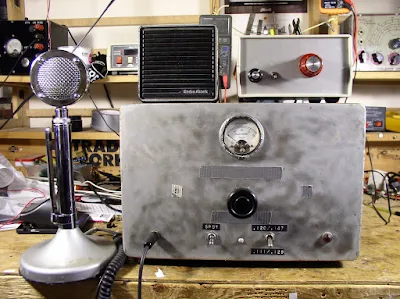 Of course, our British cousins will have some problems with this. (We already have some lexicon problems there -- I can sense many of them wincing every time I say "SodderSmoke"!) But I'm sure they will be understanding here. And indeed, the Knack can sometimes leave you Knackered! (BTW: I currently have an annoying little soldering iron burn on the tip of my right finger.)Hi Bill,Maybe I'm not the first to think of these two words, but here goes:Knacking v/n. as a noun, the act of artfully and cleverly designing, building from scratch, or repairing devices using, usually electronic in nature, specifically amateur radio related...not related to hacking As in: "My knacking was a success and I finally got my Drake 2B working on 30 meters" Somewhat redundant, since knacking IMPLIES extreme cleverness, knacking ALWAYS has a successful result, by definition! as a verb (as in "Googling") to artfully and cleverly design, build, or repair a device, normally electronic in nature as in "I was knacking my JBOT amp yesterday and successfully added a new low pass filter" Implies high level of cleverness and determination and a modicum of luck knacker n. one who artfully and cleverly designs, builds or repairs electronics, especially amateur radio related, implies high level of accomplishment and can be used by knackers to describe themselves without embarrassment or outright bragging. Knackers do not need formal training in electronics to fully qualify. Knackers always know who they are and can be identified by burn scars on their fingers from soldering accidents. Keep your great blog and podcasts going.73Steve SilvermanKB3SII
Of course, our British cousins will have some problems with this. (We already have some lexicon problems there -- I can sense many of them wincing every time I say "SodderSmoke"!) But I'm sure they will be understanding here. And indeed, the Knack can sometimes leave you Knackered! (BTW: I currently have an annoying little soldering iron burn on the tip of my right finger.)Hi Bill,Maybe I'm not the first to think of these two words, but here goes:Knacking v/n. as a noun, the act of artfully and cleverly designing, building from scratch, or repairing devices using, usually electronic in nature, specifically amateur radio related...not related to hacking As in: "My knacking was a success and I finally got my Drake 2B working on 30 meters" Somewhat redundant, since knacking IMPLIES extreme cleverness, knacking ALWAYS has a successful result, by definition! as a verb (as in "Googling") to artfully and cleverly design, build, or repair a device, normally electronic in nature as in "I was knacking my JBOT amp yesterday and successfully added a new low pass filter" Implies high level of cleverness and determination and a modicum of luck knacker n. one who artfully and cleverly designs, builds or repairs electronics, especially amateur radio related, implies high level of accomplishment and can be used by knackers to describe themselves without embarrassment or outright bragging. Knackers do not need formal training in electronics to fully qualify. Knackers always know who they are and can be identified by burn scars on their fingers from soldering accidents. Keep your great blog and podcasts going.73Steve SilvermanKB3SIIOur book: "SolderSmoke -- Global Adventures in Wireless Electronics"
http://soldersmoke.com/book.htmOur coffee mugs, T-Shirts, bumper stickers:
http://www.cafepress.com/SolderSmokeOur Book Store:
http://astore.amazon.com/contracross-20
 http://www.soldersmoke.com/soldersmoke141.mp3
http://www.soldersmoke.com/soldersmoke141.mp3








